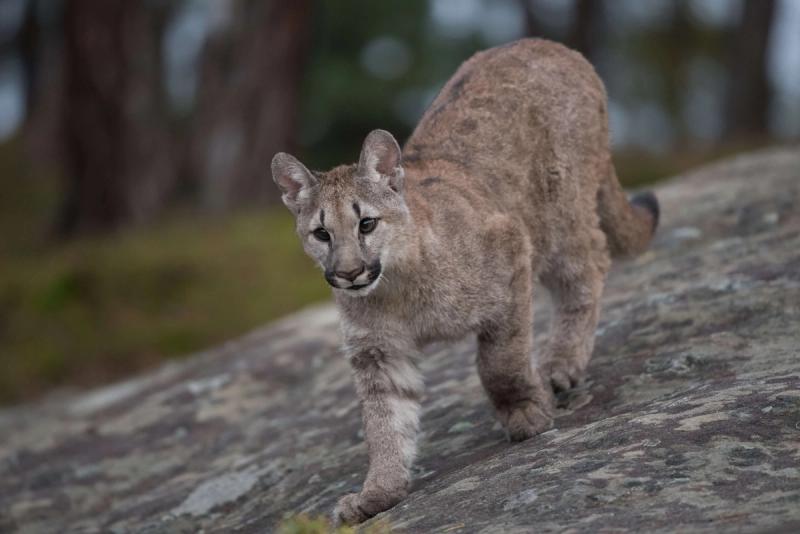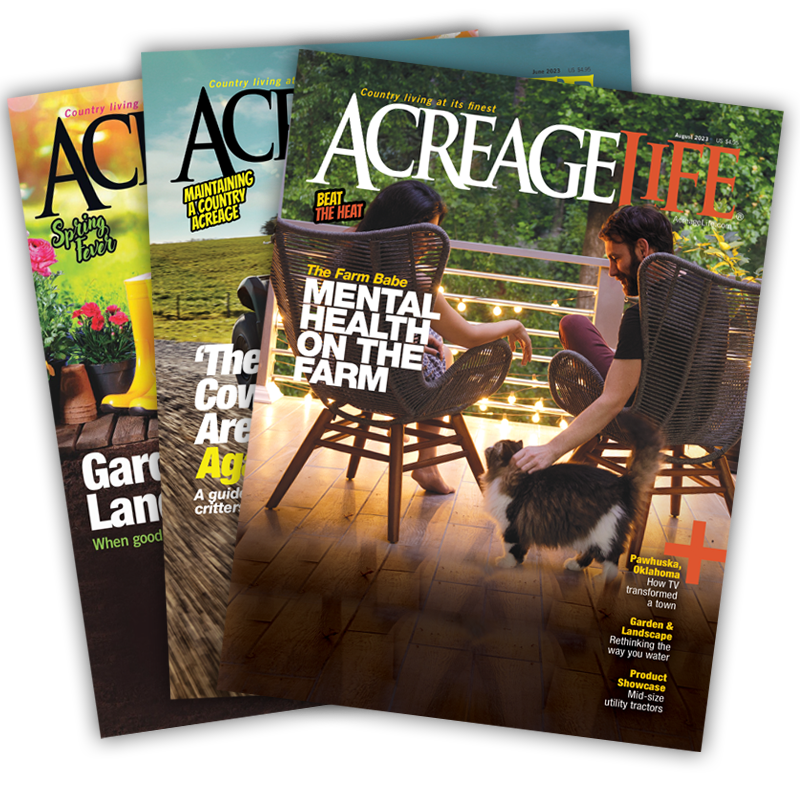Where the Wild Things Roam
Creating Safe Passages for Native Animals


Modern country living is more than scenic views and quiet surroundings — it’s also about being a steward of the land. For acreage owners, one of the most impactful ways to support the environment is by creating and maintaining wildlife corridors. These natural or man-made passageways help animals travel safely across landscapes, find food and mates and maintain healthy populations — all while minimizing human-wildlife conflicts. Thoughtful land management helps local wildlife thrive by maintaining natural corridors, reducing habitat fragmentation and fostering a balanced ecosystem.
As development creeps into rural and semi-rural spaces, these corridors become essential lifelines for everything from white-tailed deer to songbirds, foxes and pollinators. Whether your acreage is a weekend retreat or a full-time homestead, integrating wildlife corridors into your land management plan can play a vital role in sustaining biodiversity.
Understanding the Role of Wildlife Corridors
A wildlife corridor is any strip of habitat — narrow or wide — that connects two or more large natural areas. These corridors can be naturally occurring, such as riparian zones (the vegetated area along streams and rivers), or human-facilitated, like fencerows, wooded hedgerows or even patches of unmowed grass between crop fields.
Without these passageways, animal populations can become isolated. This leads to genetic bottlenecks, increased vulnerability to predators or vehicles and limited access to seasonal food sources.
How Fragmentation Impacts Wildlife
Land fragmentation is one of the leading causes of wildlife decline across North America. As rural land gets divided for housing, roads and agriculture, natural habitats become broken into smaller, less connected patches. Even well-intentioned improvements like fences, cleared fields or manicured yards can act as barriers to movement.
On small acreages, the effects of fragmentation may not be immediately visible, but cumulatively, they’re significant. Many native species require more space than one parcel can provide. For example:
- Bobcats and foxes need multiple miles of hunting territory.
- Amphibians like frogs or salamanders may travel long distances from wetland breeding grounds to upland foraging habitats.
- Butterflies and bees rely on a continuous chain of nectar-rich plants to navigate through landscapes.
By maintaining or reintroducing connective habitat features, landowners can help reverse this fragmentation.

Simple Ways to Create Wildlife Corridors on Your Land
You don’t need thousands of acres to make a difference. With some thoughtful planning, even a modest-sized property can become a vital link in the local habitat network. Here’s how:
Preserve Existing Natural Features
If your acreage includes creeks, wooded draws or native grass patches, prioritize keeping them intact. Avoid mowing or developing these areas and let them remain wild where possible. These features already function as corridors and refuges for wildlife.
Plant Native Vegetation
Native trees, shrubs and grasses not only provide shelter and food but also support insect populations that form the foundation of the food web. Plant in curving lines or irregular shapes that mimic natural edges and allow for safer, more appealing animal movement.
Focus on layered plantings that include:
- Canopy trees like oak or cottonwood.
- Mid-story shrubs such as serviceberry or dogwood.
- Ground cover and grasses like little bluestem or goldenrod.
Corridors Promote Healthier Ecosystems
- Allowing animals to migrate or disperse naturally.
- Connecting breeding populations, which supports genetic diversity.
- Reducing vehicle-animal collisions by guiding movement patterns away from roads.
- Supporting pollinators and seed dispersers essential to native plant growth.
Build Hedgerows or Fencerows
Replacing traditional fencing with vegetated hedgerows can serve dual purposes: guiding livestock while also giving wildlife a travel corridor. Let wild grasses grow at the base and intersperse with flowering species for additional pollinator support.
Create “Stepping Stone” Habitats
Even short stretches of habitat — like a brush pile, a cluster of native perennials or a pollinator patch — can serve as rest stops for smaller wildlife crossing your land.
Install Wildlife-Friendly Fencing
If fencing is necessary, consider styles that allow animals to pass safely underneath or over. A three-wire fence with at least 18 inches of clearance at the bottom is better for deer and pronghorn movement than a tightly spaced five-wire design.
Best Practices for Long-Term Success
Wildlife corridors only work if they remain accessible over time. To ensure your efforts are sustainable:
- Limit chemical use in corridor zones to protect insect and soil health.
- Keep corridors wide when possible — narrow strips are helpful but wider ones are more functional and resilient.
- Avoid lighting in these areas at night. Artificial light disrupts animal movement and behavior.
- Coordinate with neighbors. If adjacent landowners are open to collaborating, you can create larger corridors that have even more impact.
A Win for You and the Environment
Creating wildlife corridors isn’t just good for animals — it also benefits your land. Encouraging natural predators like owls and foxes can help control rodent populations. Pollinators boost garden yields, and songbirds add life and beauty to every morning.
Perhaps most importantly, becoming part of a connected ecological community gives acreage owners a deep sense of purpose. You’re not just maintaining a property, you’re protecting a way of life, for humans and wildlife alike.
Stewardship as a Lifestyle
Modern country life means embracing a lifestyle of stewardship. Wildlife corridors are one of the simplest, most meaningful ways you can contribute to the health of your land and your region. By making your acreage a safe haven — not a dead end — you help ensure a thriving, resilient countryside for generations to come.
Tags:Features

Acreage Life is part of the Catalyst Communications Network publication family.















